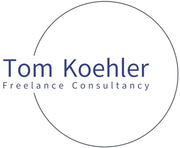Holistic support for your company and your projects
LEED, DGNB & Co.: Sustainable Building in the Industries: a Philosophy or only a Marketing Instrument?
In recent decades, awareness of environmental protection and sustainable building has increased considerably. With increasing pressure from climate change and the need for more environmentally friendly buildings, two important certification systems have become established in Europe: DGNB (German Sustainable Building Council) and LEED (Leadership in Energy and Environmental Design). DGNB is a German standard that applies in Europe, while LEED originated in the USA and is a global standard. But first, in a nutshell: What is sustainable building anyway? Sustainable construction refers to the construction and use of buildings that are environmentally friendly, resource-conserving and energy-efficient. The aim is to minimize the negative impact on the environment while improving the comfort and health of the occupants or users. This is achieved through the selection of sustainable building materials, energy-efficient designs and the use of renewable energies. A closer look at DGNB and LEED reveals various similarities between the two systems, but DGNB pays even more attention to social factors in construction than LEED: Comfort, occupational health and safety, health and user well-being are considered here. If a building owner focuses on the LEED certificate, the WELL certification could also cover the social aspect, which DGNG already takes into account. In order to receive one of the coveted certificates, the building must sufficiently fulfill the following criteria: For the DGNB certificate: 1. ecological quality: consideration of the environmental impact of building materials and the entire life cycle assessment. 2. economic quality: consideration of life cycle costs and economic efficiency. 3. socio-cultural and functional quality: ensuring the comfort, health and well-being of users. 4. technical quality: evaluation of technical aspects such as energy efficiency and ease of maintenance 5. process quality: optimization of construction and planning processes. 6. location quality: analysis of the location with regard to environmental and social aspects. For the LEED certificate: 1. sustainable site development: focus on environmentally friendly site selection and infrastructure. 2. water efficiency: measures to reduce water consumption. 3. energy and atmosphere: energy savings and use of renewable energies 4. materials and resources: use of sustainable materials and recycling. 5. indoor quality: improving air quality and comfort for users 6. innovation and design: consideration of innovative and sustainable design approaches. However, it should be noted that there are different LEED levels: Certified, Bronze, Silver, Gold and Platinum, the more noble the metal, the higher the requirements for the building and therefore the greater the effort required by the builder. Both certificates can be used to pursue the goal of promoting environmentally friendly and sustainable buildings. However, this is associated with high costs - both in terms of time and money - for the building owner. It is therefore an intensive exchange with the authorities, often accompanied by external professionals, accompanied by the use of more expensive resources, until certification is achieved at some point. Of course, certification itself also costs something (can be viewed on the websites). Nevertheless, many corporations and real estate giants are now proclaiming DGNB or at least LEED Gold as a goal for their new buildings. Presumably not only out of love for the environment, but also to increase their own market opportunities, as the DGNB itself advertises on its website. The certificate increases the building rating and companies can also advertise the fact that their buildings are built sustainably and are certified as such: A welcome marketing tool. But this is not the main driver, rather a nice side effect. If you then also consider that more sustainable buildings have lower operating costs and higher value stability, from a total cost of ownership (TCO) perspective, this cancels out the additional cost argument for initial construction. I therefore see the DGNB, LEED (and WELL) certifications as a great opportunity for building owners to reduce their ecological footprint, increase their own market opportunities and, from a TCO perspective, keep their own costs within reasonable limits.
5/8/20241 min read


Consultancy for your Project and Procurement Organization
Tom Koehler
Project and Procurement Management Professional
CONtact
Or feel free to use the contact form!
Phone: +49 155 60 16 89 64
© 2025. All rights reserved.
Imprint and Privacy Policy
